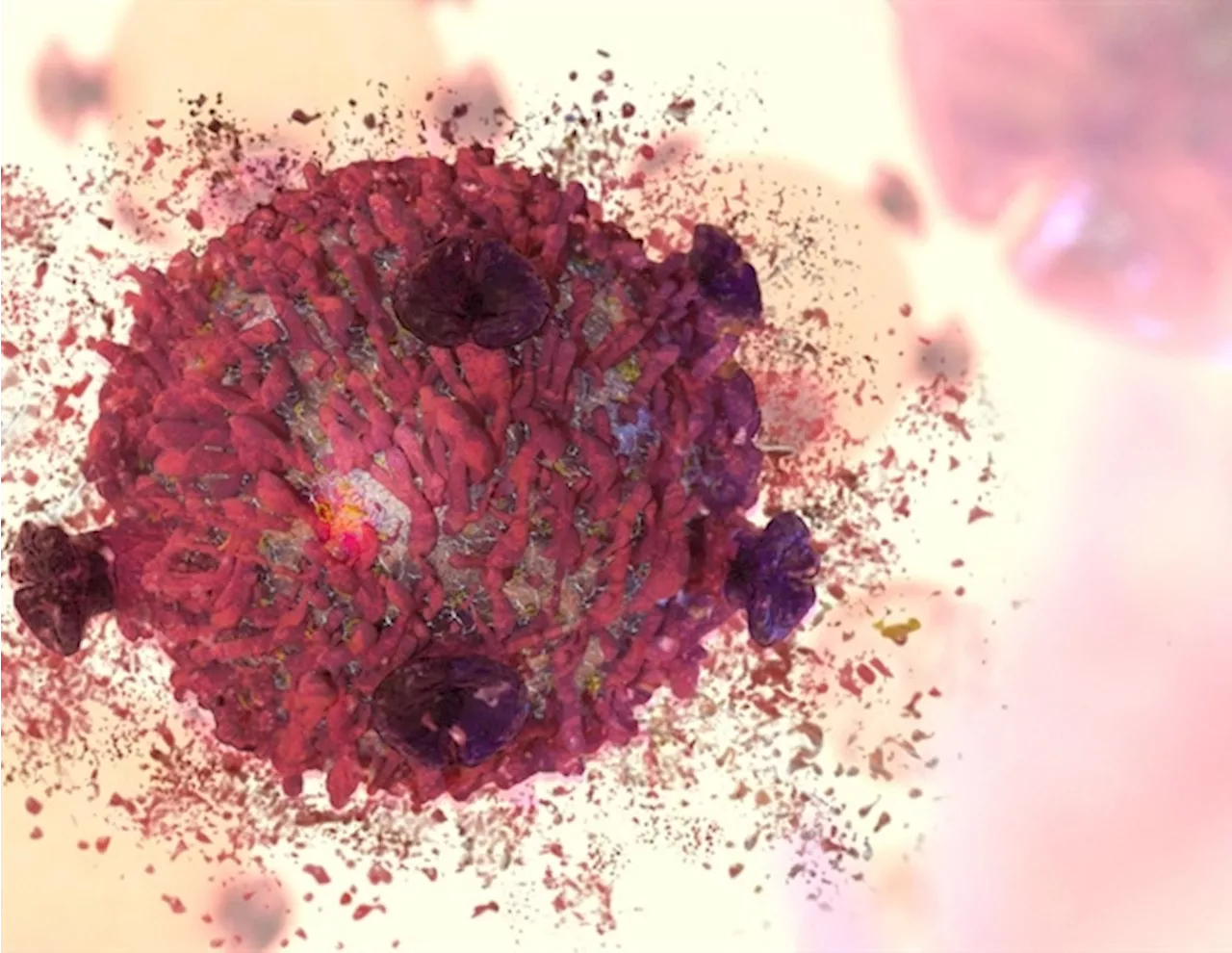A team of researchers from Chiba University and Karolinska Institutet have identified novel enhancer-promoter interactions and variants associated with neuropsychiatric disorders. This groundbreaking study sheds light on the complex mechanisms underlying these conditions and opens up new avenues for developing targeted therapies.
Neuropsychiatric disorders are witnessing a surge in prevalence. Their complex and multifactorial pathogenesis underscores the urgent need for effective and targeted therapies that can significantly enhance patients' quality of life. Genome-wide association studies (GWASs) have illuminated various genetic alterations that contribute to the development and progression of neuropsychiatric disorders, spanning a spectrum from mild dyslexia to more severe conditions such as schizophrenia.
Thousands of single nucleotide polymorphisms (SNPs) – changes in a single nucleotide position within the DNA – have been linked to neurological disorders. However, the majority of these SNPs reside in non-coding regions of the genome. While these non-coding regions do not directly encode proteins, they harbor regulatory elements such as enhancer sequences, which play pivotal roles in controlling gene expression. Enhancers can influence gene activity over considerable distances and often exhibit specificity towards cell types and developmental stages. Despite their significance, enhancers remain inadequately characterized, and their precise functions in neurological development and disease are not yet fully elucidated. A recent study, led by Associate Professor Masahito Yoshihara from the Institute for Advanced Academic Research and Graduate School of Medicine at Chiba University, in collaboration with Professor Juha Kere and Dr. Peter Swoboda from the Department of Medicine Huddinge (MedH) at Karolinska Institutet in Sweden, and Dr. Pelin Sahlén from KTH – Royal Institute of Technology in Sweden, aims to bridge this knowledge gap. Employing a series of advanced analyses, the researchers sought to identify and characterize enhancers involved in neuronal differentiation using LUHMES cells, a cell line derived from human fetal mesencephalic dopaminergic neurons. Their findings, soon to be published in EMBO Reports, offer valuable insights into the intricate world of enhancer function in neuronal disorders. Dr. Yoshihara, the lead author of the study, explains, 'Elucidating how disease-associated variants influence gene regulation can uncover previously unidentified molecular pathways involved in neuronal disorders and reveal novel therapeutic targets for drug development.' The team utilized LUHMES neuronal precursor cells, which can differentiate into functional neurons exhibiting high transcriptional similarity to human brain-derived neurons. They implemented Cap Analysis of Gene Expression (CAGE) and Native Elongating Transcript (NET)-CAGE to identify and quantify the activity of promoters and enhancers at a genome-wide scale. These techniques were synergistically combined with targeted chromosome conformation capture (Capture Hi-C/HiCap), an advanced sequencing method that establishes connections between distant enhancers and their target genes. They also investigated the associations between putative enhancers and GWAS-identified loci implicated in neuronal disorders. The analysis yielded a trove of 47,350 active putative enhancers, 65.6% of which were novel discoveries. Notably, the study observed an enrichment of SNPs associated with Parkinson's disease, schizophrenia, bipolar disorder, and major depressive disorder within these enhancers. To further validate the functional significance of these findings, the researchers conducted in vitro assays in cultured cells. Utilizing the CRISPR-Cas9 system for genome editing, they activated enhancers and promoters of genes involved in neuronal differentiation and disorders. As predicted, enhancer activation resulted in significant increases in the expression levels of the target genes. These findings illuminate novel enhancer-promoter interactions and variants located within enhancer sequences, with potential pathogenic implications. These interactions and their target genes hold promise for uncovering new druggable targets for the development of therapies against debilitating neuronal disorders. Dr. Yoshihara emphasizes the clinical relevance of their work, stating, 'Our study further exemplifies the power of enhancer discovery in providing potential clues to better understand the pathogenesis of neuropsychiatric disorders. Our results highlight the vast regulatory potential embedded in non-coding regions that harbor relevant enhancers and provide a valuable resource for future studies on neuronal development, regulation, and disorders.' This study represents a significant advancement in unraveling novel gene regulatory mechanisms involved in neuronal development and disease, paving the way for the discovery of new therapeutic strategies for debilitating neuropsychiatric conditions.
NEUROPSYCHIATRIC DISORDERS GENETICS ENHANCERS NEURONAL DIFFERENTIATION THERAPEUTIC TARGETS
United Kingdom Latest News, United Kingdom Headlines
Similar News:You can also read news stories similar to this one that we have collected from other news sources.
 Neuronal Hyperactivation Drives Age-Related Cognitive Decline, Study FindsA new study from Nagoya University reveals that aging-related cognitive decline in nematodes is caused by excessive activation of certain neurons, rather than a decrease in activity. This finding suggests that interventions like dietary changes could potentially mitigate age-related cognitive decline in humans.
Neuronal Hyperactivation Drives Age-Related Cognitive Decline, Study FindsA new study from Nagoya University reveals that aging-related cognitive decline in nematodes is caused by excessive activation of certain neurons, rather than a decrease in activity. This finding suggests that interventions like dietary changes could potentially mitigate age-related cognitive decline in humans.
Read more »
 Mapping neuronal IL-1R1 expression reveals insights into brain functionInterleukin-1 (IL-1) is a key molecule involved in inflammation and plays an important role in both healthy and diseased states.
Mapping neuronal IL-1R1 expression reveals insights into brain functionInterleukin-1 (IL-1) is a key molecule involved in inflammation and plays an important role in both healthy and diseased states.
Read more »
 Cracking the Code: Unveiling the World's Most Popular WatchesThis article delves into the world of watch sales, attempting to identify the most popular timepieces globally. While precise figures remain elusive, analysis of available data and expert insights reveal intriguing contenders.
Cracking the Code: Unveiling the World's Most Popular WatchesThis article delves into the world of watch sales, attempting to identify the most popular timepieces globally. While precise figures remain elusive, analysis of available data and expert insights reveal intriguing contenders.
Read more »
 Unveiling the Future of Diabetes Treatment: Innovative Targets and Therapeutic OptionsThis article explores the latest advancements in diabetes treatment, focusing on innovative drugs targeting specific receptors and metabolic pathways. From GLP-1 receptor agonists to gene therapies, this comprehensive analysis highlights the promising potential of these therapies to revolutionize diabetes management.
Unveiling the Future of Diabetes Treatment: Innovative Targets and Therapeutic OptionsThis article explores the latest advancements in diabetes treatment, focusing on innovative drugs targeting specific receptors and metabolic pathways. From GLP-1 receptor agonists to gene therapies, this comprehensive analysis highlights the promising potential of these therapies to revolutionize diabetes management.
Read more »
 Unveiling LATE: A New Brain Disorder Mimicking Alzheimer'sA lesser-known brain disorder called Limbic predominant age-related TDP-43 encephalopathy (LATE) is raising concerns among researchers due to its ability to mimic symptoms of Alzheimer's disease. This condition, characterized by progressive episodic memory loss, can accelerate the progression of Alzheimer's symptoms when present alongside it. Researchers emphasize the need for objective criteria to diagnose and differentiate LATE from Alzheimer's, enabling accurate identification and tailored treatment approaches.
Unveiling LATE: A New Brain Disorder Mimicking Alzheimer'sA lesser-known brain disorder called Limbic predominant age-related TDP-43 encephalopathy (LATE) is raising concerns among researchers due to its ability to mimic symptoms of Alzheimer's disease. This condition, characterized by progressive episodic memory loss, can accelerate the progression of Alzheimer's symptoms when present alongside it. Researchers emphasize the need for objective criteria to diagnose and differentiate LATE from Alzheimer's, enabling accurate identification and tailored treatment approaches.
Read more »
 Unveiling the Link Between Cell Death and Senescence in CancerA new review examines the interplay between cell death and cellular senescence in cancer, highlighting the potential of targeting these processes for therapeutic development.
Unveiling the Link Between Cell Death and Senescence in CancerA new review examines the interplay between cell death and cellular senescence in cancer, highlighting the potential of targeting these processes for therapeutic development.
Read more »
